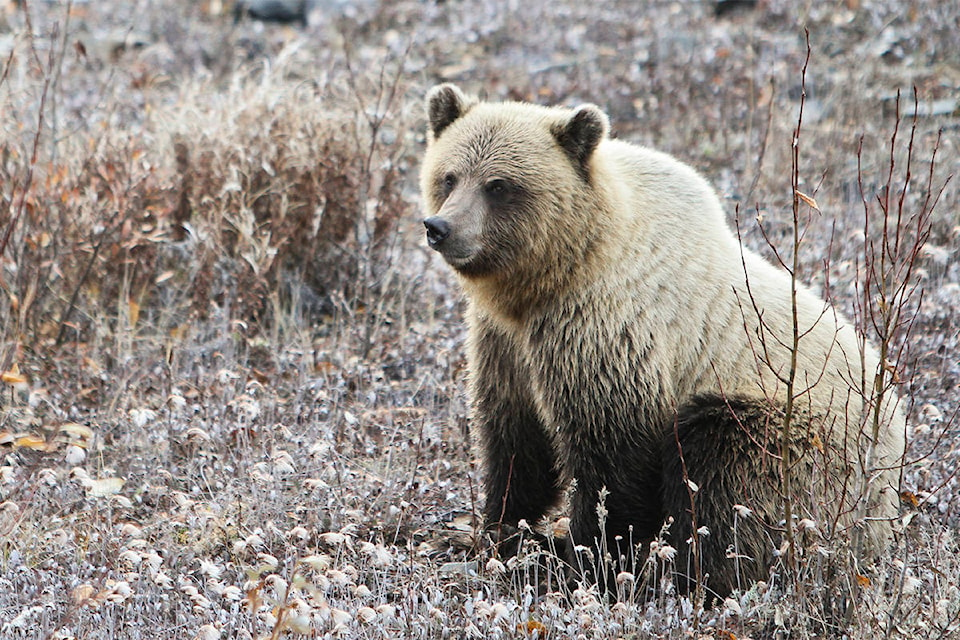If you’re the type of person finding bear scat on the bottom of your shoe after a hike, Lucile Fressigné has a job for you.
The Yukon-based researcher is leading a citizen science project that has ordinary people collecting samples of grizzly and black bear feces in order to help learn more about local populations and protect their habitat.
“People like to be involved and usually it’s quite easy to find, recognize and sample it. You don’t need to be an expert to do that. I think it’s important to involve the community, to bring awareness to the people about the population of bears,” she said.
If you think you can bear the idea of collecting animal poop, it could be an important part of protecting the species.
Collecting feces is one method that scientists can use to track and gather information about a species from DNA. It is one technique among many used by scientists to collect data about wild animals, including radio-tracking or hair-snag setups.
The biggest advantage in feces collecting, of course, is that it’s not invasive or influencing the behaviour of the animals. It doesn’t require tranquilization or the setting of bait.
Pooping on trails is as natural a behaviour as there is for bears.
“Bear scat is cheaper, it’s not invasive and it can involve many people,” Fressigné said.
Operation Ursus Research using Scat (OURS) is supplying citizen science kits to people who want to participate, which include small green vials filled with silica beads, biodegradable wooden sticks and detailed instructions for sampling.
After bison and moose poop, bears have some of the largest droppings in Canada, making their scat easy to identify. Fressigné said food items like berries or plant matter are often still visible.
In order to participate and sample the DNA, the citizen scientists log the location of their find on the iNaturalist phone app. Next, samplers glove up for safety and carefully deposit a small sample of feces into a green vial using an included wooden stick.
After collection, it’s important for the sample to be placed on ice when possible in order to preserve the DNA.
This is the first summer for the project, which is planned to last two years in the initial phase. So far, Fressigné said she has received 43 samples this year. Two workshops on the project have been held in Mount Lorne and Marsh Lake.
There is an obvious ick factor to handling feces for some, but Fressigné said the people participating are motivated by a genuine love for wild animals.
“The major trend of people coming out are those who care, people who love bears and still want to see some in the wild. Many are hikers, or people who bike and go out on the land anyway, so they think ‘I can do this.’ There are people of all ages, from 20s to 70s,” she said.
Grizzly bears in Canada were listed as a species of special concern under the federal Species at Risk Act beginning in 2018.
The number of grizzly bears in Yukon is estimated at 6,000 to 7,000, according to the Yukon government’s conservation plan for the species, which notes that the true number is unknown and current states are based on speculative research done in the 1990s.
“We are really lacking data now in the Yukon. This is based on a count that is very outdated. The research is very important to assess the bear population so we can update the conservation and management plans,” Fressigné said.
Fressigné has partnered with CPAWS Yukon, Yukon Hiking and the Fish and Game Association to spread the word about the project.
“We’re trying to reach all kinds of people,” she said.
It’s also important to remain bear aware while collecting samples, lest an encounter endanger the animals that citizen scientists are trying to protect. The usual tips – making noise, carrying bear spray and avoiding close or surprise encounters – still apply.
Fressigné said summer is a good time for collection of the scat, while winter will be a time to analyze the samples that have been collected.
Fressigné has a PhD in molecular and cellular biology and has received some funding for the project from the Yukon Fish and Wildlife Enhancement Trust and Yukon University.
When analyzed, DNA from scat can give information about the species and sex of a bear and how individuals are related. Based on how often an individual bear’s scat is collected, it can also give an area of what the bear’s range is and how dense a population is.
Fressigné hopes to learn more about how Yukon bears are moving in their habitat. Patterns could reveal important new information about the number and health of grizzlies and black bears in the territory.
Scat sampling kits are available for pick-up in Marsh Lake Community Centre, Mount Lorne Community Centre and beside the Cut Off Restaurant and Bar. Those wishing to participate can contact Operation Ursus Research using Scat in order to receive an access code, through Facebook or by emailing ours.lfressigne@gmail.com.
Contact Haley Ritchie at haley.ritchie@yukon-news.com
